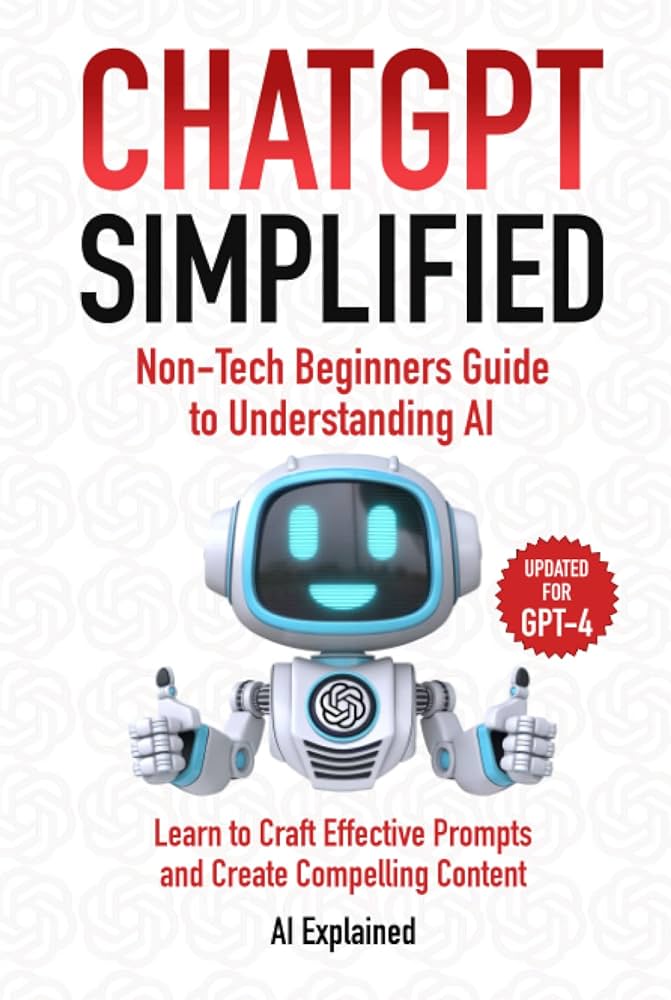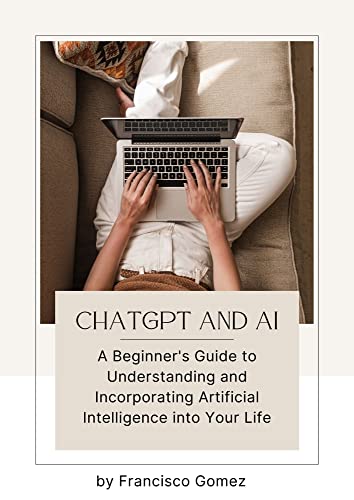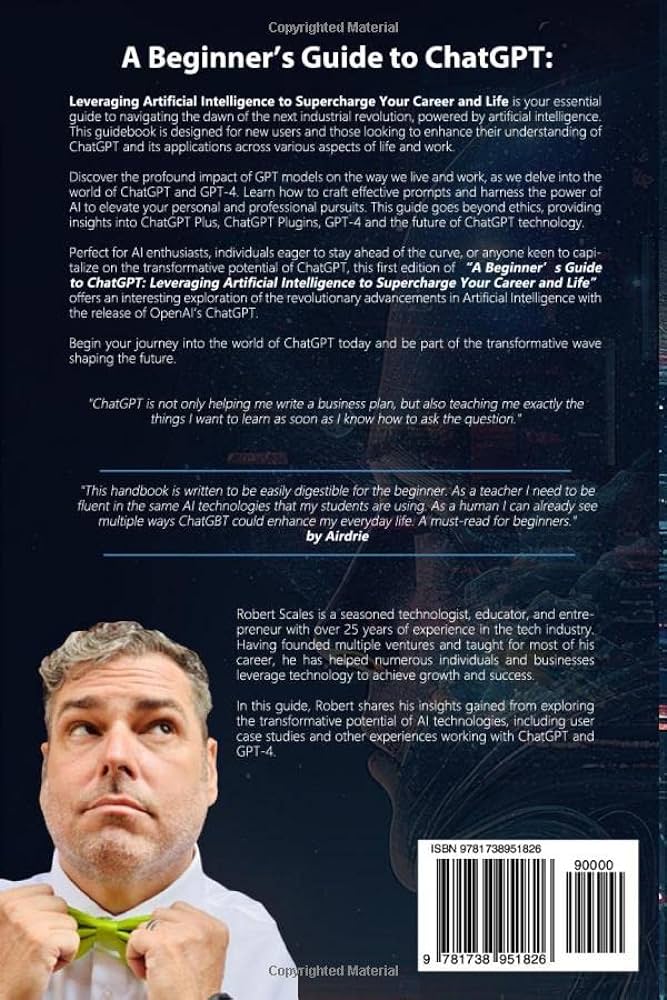Have you ever wondered how machines are able to understand and respond to human language? Look no further than GPT, which stands for Generative Pre-trained Transformer. In this beginner’s guide to artificial intelligence, we will explore the fascinating world of GPT and how it has revolutionized the way machines can generate human-like text. Get ready to dive into the world of AI and uncover the mysteries of GPT.

What is Artificial Intelligence?
Definition of AI
Artificial Intelligence (AI) is a branch of computer science that focuses on the development of intelligent machines that can perform tasks that would typically require human intelligence. These tasks include problem-solving, learning, speech recognition, and decision making. AI systems are designed to analyze and interpret large amounts of data, identify patterns, and make predictions or recommendations based on the information gathered.
AI in everyday life
AI has become an integral part of our everyday lives. From voice assistants like Siri and Alexa to personalized recommendations on streaming platforms, AI technologies have woven themselves into our day-to-day experiences. AI algorithms power the search engines we use to find information, the social media platforms we interact with, and even the autonomous vehicles that are being developed. Artificial intelligence has the potential to revolutionize industries such as healthcare, finance, and transportation, making processes more efficient and innovative.
Introduction to GPT
Definition of GPT
GPT, which stands for Generative Pre-trained Transformer, is a state-of-the-art AI model developed by OpenAI. GPT takes the capabilities of AI to another level by employing a Transformer architecture, a type of neural network that excels in processing and generating large volumes of text. This model is trained on vast amounts of internet text to learn the intricate patterns and structures of human language, allowing it to generate coherent and contextually relevant text.
Purpose of GPT
The primary purpose of GPT is to generate human-like text. By leveraging its deep understanding of language patterns, GPT can generate text that is indistinguishable from text written by a person. GPT enables various applications, from generating creative writing, assisting in language translation, to even creating the dialogue for virtual characters in video games. GPT’s ability to generate coherent and contextually relevant text has made it a powerful tool in the field of natural language processing.
History of GPT
Development of GPT
The development of GPT can be traced back to 2018 when OpenAI introduced the GPT model known as GPT-1. This initial model provided impressive results in various language-related tasks and demonstrated the potential of the Transformer architecture in natural language processing. Building upon the success of GPT-1, subsequent iterations of the model, such as GPT-2 and GPT-3, were developed to further enhance AI text generation capabilities.
Evolution of GPT
With each iteration, GPT models evolved in size and scope. GPT-2, released in 2019, was a significant milestone, capable of generating highly coherent and contextually relevant text. However, it was GPT-3, released in 2020, that truly showcased the potential of GPT. GPT-3, with its staggering 175 billion parameters, surpassed its predecessors in both scale and performance. This immense size allowed GPT-3 to generate text that often seemed indistinguishable from human-written content.
How GPT Works
Neural Networks
GPT operates on the principle of neural networks, which are computational models inspired by the human brain’s neural connections. Neural networks consist of interconnected nodes, or artificial neurons, that process and transmit information. GPT’s Transformer architecture uses attention mechanisms, allowing it to focus on specific parts of input text and learn their relationships. This mechanism enables GPT to generate contextually relevant and coherent responses.
Training Data
To train GPT, massive amounts of internet text are utilized as training data. The model processes and learns from this data to understand the intricate patterns and structures of human language. By assimilating a diverse range of sources, GPT gains a robust foundation in language understanding and generation. This comprehensive training data helps GPT generate text that aligns well with human communication styles.
Fine-tuning
After the initial training, GPT undergoes a fine-tuning process to adapt it to specific tasks or contexts. During fine-tuning, GPT is trained on a narrower dataset that aligns with a particular domain or application. This process allows GPT to align its generated text more closely with the desired output, making it more suitable for specific applications such as content generation in specific industries or dialogue generation for virtual characters.
Inference
Once trained and fine-tuned, GPT can generate text based on the input it receives. Inference, the process of generating text output, occurs by providing GPT with a prompt or an initial seed text. GPT then uses its trained knowledge and neural network architecture to predict and generate coherent text that follows the given prompt. The output text can resemble human-written content and often exhibits a high level of coherence and contextual relevance.

Applications of GPT
Text Generation
One of the primary applications of GPT is text generation. Given an initial prompt or seed text, GPT can generate coherent and contextually relevant text. This ability has various applications, including content creation, writing assistance, and even helping with brainstorming ideas. GPT has been used to generate news articles, essays, stories, and even poetry, providing valuable tools to writers and content creators.
Language Translation
GPT’s ability to understand and generate natural language makes it a powerful tool for language translation. By inputting text in one language, GPT can generate translations that capture the essence and context of the original text. GPT’s translation capabilities have the potential to revolutionize cross-language communication and help bridge the language barrier.
Speech Recognition
GPT’s understanding of language extends beyond text. It can also be utilized in speech recognition applications. By transforming spoken words into text, GPT enables accurate transcription and speech-to-text conversion. This has applications in transcription services, voice assistants, and accessibility tools, enabling smoother and more efficient communication.
Chatbots
GPT’s ability to generate human-like text makes it an ideal technology for chatbot development. Chatbots powered by GPT can simulate natural conversations and provide intelligent responses. These chatbots find applications in customer service, virtual assistance, and even therapeutic interactions. By leveraging GPT’s language generation capabilities, chatbots can enhance user experiences and provide personalized support.
Benefits of GPT
Improved Efficiency
GPT’s text generation abilities can significantly improve efficiency in various tasks. By automating content creation, GPT can speed up the process, reducing the time and effort required to generate written content. Additionally, GPT’s language translation capabilities eliminate the need for manual translation, making cross-lingual communication faster and more efficient. Overall, GPT’s efficiency benefits numerous industries where language processing and generation are pivotal.
Enhanced Creativity
GPT’s natural language understanding and generation capabilities provide a platform for enhanced creativity. It can assist writers, content creators, and artists in brainstorming ideas, generating unique perspectives, or aiding in creative problem-solving. By augmenting human thought processes, GPT can inspire new ideas and push boundaries, fostering innovation and creativity across diverse fields.
Advanced Problem-solving
GPT’s ability to analyze and interpret vast amounts of data empowers advanced problem-solving. By processing complex information and patterns, GPT can assist in identifying solutions, recognizing trends, and making predictions. This capability finds applications in fields like finance, healthcare, and research, where data-driven insights and accurate decision-making are vital.

Limitations of GPT
Lack of Common Sense
Although GPT excels in generating coherent and contextually relevant text, it lacks common sense reasoning abilities. GPT primarily relies on patterns and structures learned from training data and struggles when faced with situations that require real-world knowledge or understanding. As a result, GPT may generate responses that seem plausible but lack logical consistency or common sense reasoning.
Biased Output
GPT generates text based on patterns and information learned from its training data. If the training data contains biased or skewed information, GPT may exhibit similar biases in its generated text. These biases can perpetuate existing societal prejudices, reinforce stereotypes, and contribute to the spread of misinformation. It is crucial to continuously evaluate and address biases when utilizing GPT’s text generation capabilities.
Ethical Concerns
The use of GPT brings about ethical concerns, especially in instances where the generated text is presented as human-created content. If not properly disclosed, the distinction between human-generated and AI-generated content can be blurred, leading to potential misleading information or manipulation. Ensuring transparency and responsible use of GPT’s capabilities is essential to maintain ethical standards in its implementation.
Future of GPT
Development in GPT Technology
The future of GPT holds exciting possibilities. With ongoing research and development, GPT models are expected to become even more powerful, capable of generating text that is virtually indistinguishable from human-authored content. Continued improvements in training data, model architecture, and fine-tuning techniques will further enhance GPT’s language understanding and generation capabilities.
Impact on Society
As GPT and other advanced AI models continue to advance, their impact on society is set to be profound. GPT’s applications in various industries, such as healthcare, cybersecurity, and education, have the potential to revolutionize processes, improve efficiency, and enable new innovations. However, with this impact comes a need for ethical considerations, regulation, and responsible deployment to ensure the benefits are widespread and equitable.

GPT vs. Other AI Models
Comparison with RNN
GPT’s transformer-based architecture sets it apart from Recurrent Neural Networks (RNNs), another popular type of AI model. While RNNs excel in tasks that require sequence modeling, GPT’s transformer architecture allows it to process and generate text on a larger context scale, making it better suited for natural language understanding and generation.
Differences from Rule-based Systems
GPT differs significantly from rule-based systems that rely on explicitly defined rules to process and generate text. GPT’s strength lies in its ability to learn from data and use that knowledge to generate contextually relevant text, without relying on predefined rules. This flexibility makes GPT adaptable to a wide range of tasks and contexts, providing more dynamic and versatile text generation capabilities.
Key Players in GPT
OpenAI
OpenAI, the organization behind GPT, has played a pivotal role in the development and advancement of GPT models. OpenAI’s research and continuous technological innovations have pushed the boundaries of AI text generation capabilities, paving the way for GPT’s success and widespread adoption. OpenAI’s commitment to open-source collaboration and responsible AI deployment remain at the forefront of GPT’s development.
Google’s AI research
Google’s AI research division has also made significant contributions to the field of natural language processing, which indirectly impacts the development of GPT. Google’s research has advanced language models and architectures, contributing to the broader understanding and advancement of AI technologies that underpin GPT’s capabilities.
Microsoft’s AI research
Microsoft’s AI research has played a vital role in enhancing the text generation capabilities in AI models. Through their research, Microsoft has contributed to advancements in language understanding, natural language processing, and neural network architectures, all of which have indirectly influenced the development and capabilities of GPT.
In conclusion, GPT has revolutionized the field of natural language processing, bringing AI text generation capabilities to new heights. Its ability to understand and generate coherent and contextually relevant text has found applications in various industries and has the potential to transform numerous aspects of our lives. However, it is important to address and mitigate the limitations and ethical concerns associated with GPT’s use to ensure responsible and equitable deployment. With ongoing research and development, the future of GPT holds immense potential for further advancements and societal impact.







Leave a Reply